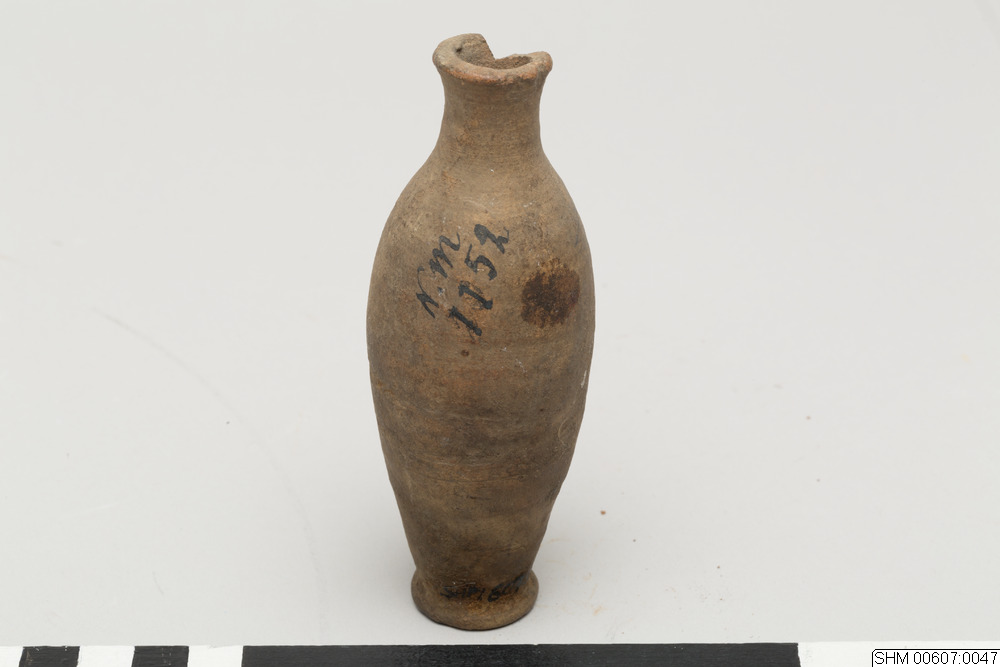| Typ <itemType> |
Objekt/föremål |
| Description <itemDescription> |
|
| Inventory number <itemDescription> |
|
| Acquisition <itemDescription> |
|
| Comments <itemDescription> |
-
An unguentarium (pl. unguentaria) is a small container, typically made of clay or glass, for oil and perfumes. They are mostly associated with Hellenistic and Roman contexts, especially as grave goods...
Visa hela
An unguentarium (pl. unguentaria) is a small container, typically made of clay or glass, for oil and perfumes. They are mostly associated with Hellenistic and Roman contexts, especially as grave goods. The so-called fusiform shape (from the Latin fusus, meaning “spindle”) is characteristic of Hellenistic unguentaria and is thought to have developed functionally from the lekythos. On the other hand, the so-called piriform shape (from the Latin pirus, meaning “pear”) is characteristic of the Roman era, especially the early Principate.
Stäng
|
| Condition <itemDescription> |
|
| Dimensions <itemDescription> |
|
| Parallels <itemDescription> |
|
| Referens, publicerad i <itemDescription> |
|
| Händelse <context> |
-
Förvärvad av Hedenborg, Johan, Statens Historiska museum.
|
| Material, engelska<itemMaterial> |
- Pottery
- Earthenware
- Clay
|
| Material<itemMaterial> |
- Keramik
|
| Nyckelord <itemKeyWord> |
-
Historiska museet
-
balsamarium
-
ceramics
-
lacrimarium
|
| Mått <itemMeasurement> |
-
Height / Höjd: 11,2 cm.
-
Diameter: 2,1 cm.
-
Width / Bredd: 4 cm.
|
| Object, Swedish<itemName> |
- flaska
- kärl
|
| Object<itemName> |
- unguentarium
|
| Ämne <subject> |
|
| Inventory number <itemNumber> |
|
| Rättigheter för metadata <itemLicense> |

|
| Källa <presOrganization> |
Statens museer för världskultur - Medelhavsmuseet |
|
Källa <url>
|
|







 ARTIKLAR I WIKIPEDIA
ARTIKLAR I WIKIPEDIA ARTIKLAR I WIKIDATA
ARTIKLAR I WIKIDATA BILDER I WIKIMEDIA COMMONS
BILDER I WIKIMEDIA COMMONS




